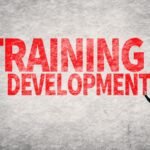Navigating Workplace Conflicts: Effective HR Mediation Techniques
Workplace conflicts are an inevitable part of any organization. Whether it’s a disagreement between colleagues, conflicts between managers and subordinates, or team disputes, these conflicts can have a negative impact on employee morale, productivity, and overall organizational success. As a Human Resources (HR) professional, one of your key responsibilities is to effectively navigate and resolve workplace conflicts. In this blog post, we will explore effective HR mediation techniques to help you address conflicts and promote a harmonious work environment.
- Create a Safe and Confidential Space:
When it comes to mediating workplace conflicts, it’s essential to create a safe and confidential space for employees to express their concerns. Provide a neutral meeting room or a private setting where both parties can openly discuss their perspectives without fear of judgment or retaliation. Assure them that the discussion will remain confidential unless there are legal or safety implications.
- Active Listening and Empathy:
As the HR mediator, your role is to actively listen to both parties involved in the conflict. Practice active listening by giving your full attention, maintaining eye contact, and providing verbal and non-verbal cues to show understanding. Demonstrate empathy and try to understand the underlying emotions and motivations behind each person’s viewpoint. This empathetic approach can help build trust and encourage open communication.
- Neutral and Impartial Facilitation:
Maintain a neutral and impartial stance throughout the mediation process. It’s crucial to remain objective and not take sides. Avoid making assumptions or rushing to judgments. Instead, focus on facilitating a constructive dialogue between the parties involved. Encourage them to share their perspectives, ask clarifying questions, and guide the conversation towards a resolution.
- Identify Common Interests and Goals:
During the mediation process, help the conflicting parties identify their common interests and goals. Encourage them to look beyond their differences and find areas of agreement. By shifting the focus from individual positions to shared objectives, you can help foster a collaborative mindset and promote problem-solving rather than blame.
- Explore Win-Win Solutions:
Encourage the conflicting parties to brainstorm and explore potential win-win solutions. This approach involves finding mutually beneficial outcomes that address the concerns of both parties. Facilitate a discussion where they can generate alternative options and negotiate a compromise that satisfies their respective needs. Emphasize the importance of finding a solution that preserves the working relationship and allows for future collaboration.
- Follow-Up and Document:
Once a resolution has been reached, it’s essential to follow up with both parties to ensure that the agreed-upon solutions are being implemented and are effective in resolving the conflict. Document the outcomes of the mediation process, including any agreements made, and maintain a record for future reference. This documentation can serve as a reference point if similar conflicts arise in the future.


































